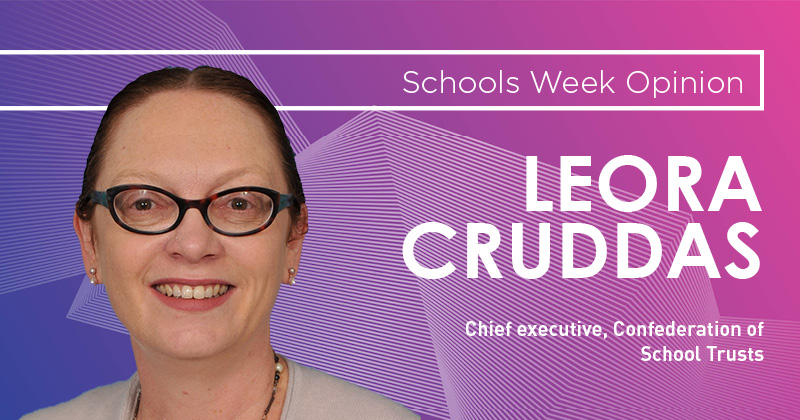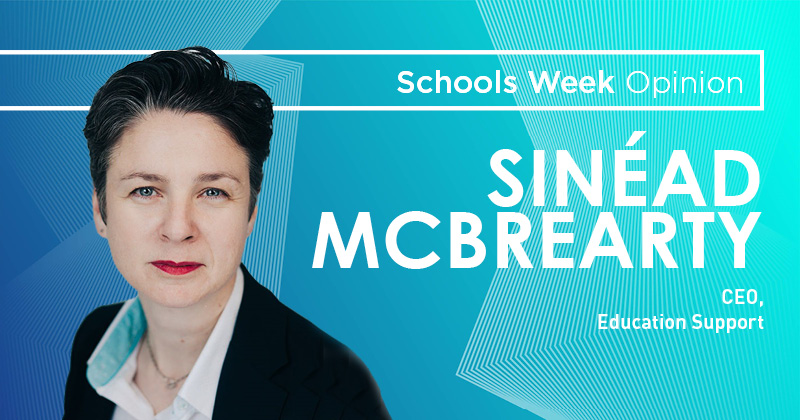This year marks the third annual National School Trust Report, published by the Confederation of School Trusts with Edurio. The full survey report continues to deliver a unique picture of the state of the country’s schools and trusts.
This year, the top priorities for trusts are providing inclusive education – including for those with special educational needs (SEND) – and tackling attendance problems.
The SEND system is broken
We know that the SEND system is broken. CST has for a long time seen SEND as a top priority. Indeed back in July 2022, we published a paper which explored the need to shift the way society thinks about people with learning disabilities by avoiding the language of deficit.
The authors of this paper, Ben Newmark and Tom Rees, make the case for a more ambitious vision of what a good life is – placing greater value on difference, common values, the process of learning and more – to provide a healthy balance to meritocratic values of academics, occupation and wealth.
Tom Rees wrote about this further in the lead-up to the election, arguing for a bold vision of inclusion which would normalise different learning needs and allow is to ‘retire’ the SEND label by 2034.
But we need to be more explicit about how schools can be more inclusive. So in 2023, we published a paper setting out five principles for inclusion.
There is so much more for us to do. We know that there are a range of factors beyond the control of individual schools and trusts which are incredibly challenging. These include funding, workforce supply, elements of accountability and the paucity of services around our schools. Government must respond to these wider, strategic challenges.
Financial pressures
Trusts are also increasingly concerned about financial pressures facing education, with financial sustainability overtaking improving the quality of education as top strategic priorities for the first time.
Balancing budgets (83 per cent) and cost reduction (73 per cent) are the top financial priorities for trusts. Three-quarters of trusts expect to dip into their reserves this year.
And trusts are also concerned about the state of school buildings. While the focus on “crumbly concrete” has faded a bit, schools still face failing infrastructure, with two in five trusts saying they have building that are life expired or at imminent risk of failure.
We know that the Department for Education shares this concern. In their annual report, they have identified a risk of building collapse in the school estate resulting from structural safety issues. This risk’s rating is “critical” and “very likely”.
The coming spending review is an important moment. We know that the fiscal environment is challenging. However, spending on education is an investment in our future. And safe buildings that are good places to learn are essential for any state school system.
In our Funding Futures series, we set out a case for changing the way school funding is delivered. We argued the current landscape is overly complex and bureaucratic, and that it limits the extent trust leaders can plan strategically over the longer term.
In our response to the Treasury ahead of the October budget, we argue for the introduction of a ‘schools’ costs index’ to identify affordability challenges facing schools. And we said that funding formulas should be protected to guarantee stability.
These proposals form part of our wider argument for a fully-implemented national funding formula that utilises evidence and a transparent methodology.
Civic leadership
Education will always be at the core of school trusts, but trust leadership is also about ensuring financial, physical and strategic leadership so children have the space to flourish.
The results in our 2024 national school trust report indicate that trust leaders increasingly see the power of their trusts to bring schools together to address financial and educational challenges. Amid a wide range of support they provide across the sector, 90 per cent work with schools outside their own trust (including 72 per cent working with maintained schools).
As we begin to think about the policy on regional improvement teams, there is an opportunity for trusts to step forward and bring the capacity the system needs to improve all schools. Indeed, this is what trusts are already doing.
Although the challenges we face are considerable, the mindset of education leaders will always be solution-focused. By working together, we can rebuild the resilience of the school system.
Read the full report here











